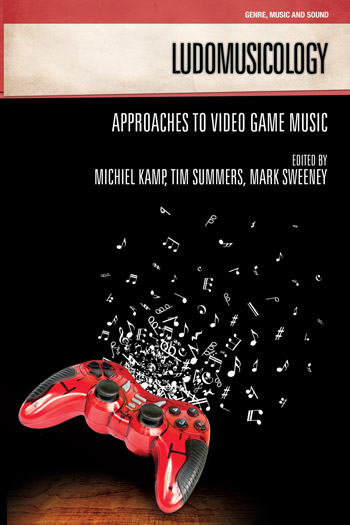Suture and Peritexts: Music Beyond Gameplay and Diegesis
Ludomusicology - Approaches to Video Game Music - Michiel Kamp
Michiel Kamp [+]
Utrecht University
Description
While a typical Hollywood film aims to present a consistent and coherent fictional world through methods such as continuity editing, video games, by virtue of their rule-bound nature, have no such obligations (see Juul, 2005). This means a video game’s fictional world or diegesis can be fragmented and interrupted to a far larger extent than that of a film, for instance by interface and pause-and-play mechanics, or by the death of a player avatar: when Mario dies in Super Mario Bros. (Nintendo, 1985), the diegesis is interrupted by a game-over screen, and the story world resets to a previous point in time. At the same time, the player’s control of the game can be taken away at any time without interruption of the diegesis, for instance, during non-interactive cutscenes that move the game’s story forward. One of the few elements of a game that can play a part in each of these four situations is the nondiegetic musical soundtrack. In this chapter, I offer an account of music as overarching a game in its totality, in the hopes of both broadening our understanding of the unique contribution of music to games, and of what makes music in games different from music in other media. I propose that there are two primary ways of understanding music beyond diegetic gameplay sequences: as peritexts (Genette, 1997; Summers, 2012) and as a structuring device that relates different situations to each other in time. As a peritext, music has relations to title cards and credit sequences in film, but also to films’ other paratextual elements such as DVD menus; as a structuring device, music works along the lines of what Claudia Gorbman (1987) calls suture in film music. Following a short overview of the different kinds of peritextual music found in video games, the chapter is then divided into two sets of case studies that exemplify peritextual and structural music. The first looks at the Max Payne (Remedy Entertainment and Rockstar, 2001–2012) and Battlefield(Digital Illusions/EA, 2002–2011) series, that both have strong ties to Hollywood tropes and narratives, including an emphasis on a continuous diegetic experience. I argue that the musical cues unique to nondiegetic situations in these games—specifically loading screens—function in similar ways to establishing shots in films. The second set of case studies describes how music structures the nondiegetic gameplay event of the death of an avatar in three different platform games. Unlike the games in the first set, two-dimensional platform games have a ‘looser’ diegetic world, as is exemplified by Super Mario Bros., Super Meat Boy (Team Meat, 2010) and Braid (Number None, 2008). Each of these games uses music to structure the gameplay situation surrounding the death of the player’s avatar in a different way.






